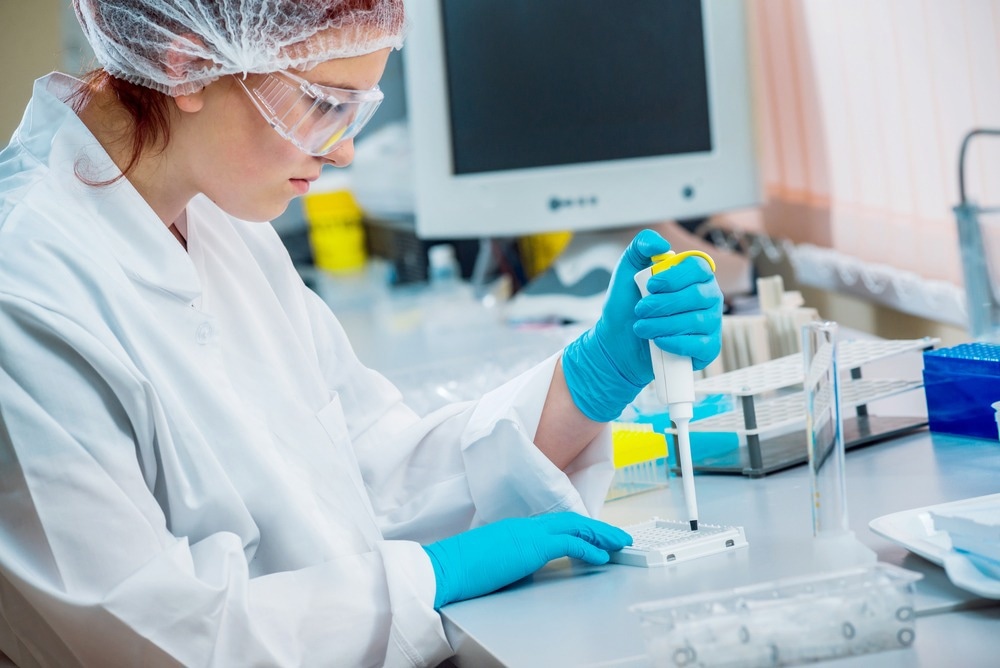In this article, AZoLifeSciences offers a complete guide to ex-vivo drug testing.

Image Credit: Roman Zaiets/Shutterstock.com
A History of Ex-Vivo Drug Testing
The origins of ex-vivo drug testing date back to the early 20th century when scientists began testing cells in petri dishes. These dishes offered scientists a way to see how the cells would behave outside their natural environment.
Ex-vivo drug testing is a type of experimental test that analyzes biological samples outside of their usual physical environment. Samples for ex-vivo drug testing can be of human origin or of any other living organism.
One of the first examples of ex-vivo drug testing was the culture of frog nerve fibers in a saline solution. These experiments were conducted in 1907 by Ross Granville Harrison, an American anatomist, and are considered important for ex-vivo drug testing as they demonstrated the possibility of testing living tissues outside of the living organism.
Since then, scientific progress in several fields, including cell and tissue culture techniques, drug development and pharmacology, have helped to progress ex-vivo drug testing.
Today, ex-vivo drug testing has developed into a process that is used to reliably study the interactions of a given drug (usually one being investigated in clinical trials) with biological targets and evaluate its safety in terms of toxicity and side effects as well as its efficacy. It is, therefore, a valuable tool in pre-clinical trials before the drug is cleared for testing in humans.
Ex-vivo drug testing can investigate a number of sample types, including tissue slices, isolated cells, organdies (three-dimensional cell cultures that replicate the structure and functions of organs), and precision-cut tissue slices (cut to maintain their original structure and function).
Why is Ex-Vivo Drug Testing Important?
Ex-vivo drug testing is a valuable tool for the pharmaceutical industry and scientific research. It can provide vital insights into drug behavior without exposing human subjects to a potentially risky compound. Ex-vivo drug testing can be used to obtain essential toxicity and side effect information that may make a potential drug unsuitable for human trials. This helps to reduce potential harm to patients enlisted in clinical trials. It also offers an alternative to testing the drug using animal models.
How Does Ex-Vivo Drug Testing Work?
There are several steps involved in ex-vivo drug testing. The first involves sample collection, where the biological sample is obtained from human patients or living organisms, depending on the aim of the test. The next step is sample preparation, where the sample is prepared for ex-vivo testing so that the cells maintain their viability and functionality during testing. Preparation may involve cutting or placing isolated cells into a special media.
Next, the samples are exposed to the drug. There are many methods by which the drug compound can be introduced to the sample; it can be directly administered via immersion, perfusion, or other suitable methods, depending on the study.
Following the treatment stage is the incubation period, where the samples are incubated in a controlled environment to allow time for the drug to interact with the cells. This incubation time varies depending on the study design. Throughout the incubation period, scientists collect data on various parameters such as cell viability, cell functionality, tissue morphology, presence of molecular markers, and more. During this phase of ex-vivo drug testing, scientists may use a number of different tools and methodologies, such as microscopy, imaging techniques, and various molecular assays.
After the data collection stage of ex-vivo drug testing, scientists run analyses on their data and interoperate its meaning. Here, scientists look into the data for vital information on the safety and efficacy of the drug.
Finally, additional ex-vivo drug testing may ensue to confirm the findings of the initial study if they indicate that the drug compound may be beneficial in the treatment of a disease.
What Have Been Some Recent Developments in Ex-Vivo Drug Testing?
Over the last decade, there have been some interesting developments in ex-vivo testing.
Organ-on-a-chip technology was finally established in 2010, after years of development. It is the most advanced form of ex-vivo testing that involves developing microfluidic devices with cells arranged to replicate both the structure and function of organs.
Using this ex-vivo testing platform, scientists can obtain more accurate and relevant data compared with information obtained via traditional cell culture techniques. In the years that have passed since organ-on-a-chip was first established, the technology has continued to advance. One of the most important advancements has been the development of multi-organ integration, where multiple organ models are integrated on a single platform, allowing for more realistic studies of drug metabolism and disease progression.
Additionally, we have also seen developments in 3D bioprinting in recent years that have shown promising applications in ex-vivo drug testing. 3D bioprinting enables cells to be placed precisely, so that complex 3D tissues can be constructed, thus allowing for more accurate disease modeling.
Finally, we have also seen automation and robotics being increasingly integrated into ex-vivo testing, allowing for the high-throughput screening of drugs.
Sources
Singh, D. et al. (2022) Journey of organ on a chip technology and its role in future healthcare scenario. Applied Surface Science Advances, 9, p.100246. doi:10.1016/j.apsadv.2022.100246.
Spinner, M. et al. (2020). Ex vivo drug screening defines novel drug sensitivity patterns for informing personalized therapy in myeloid neoplasms. Blood Advances, 4(12) p.2768. doi:10.1182/bloodadvances.2020001934.
Xu, Y. et al. (2021) An overview of in vitro, ex vivo and in vivo models for studying the transport of drugs across intestinal barriers. Advanced Drug Delivery Reviews, 175, p.113795. doi:10.1016/j.addr.2021.05.005.
Further Reading
Last Updated: Aug 8, 2023